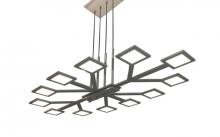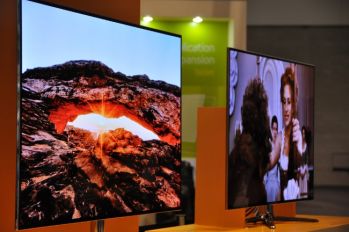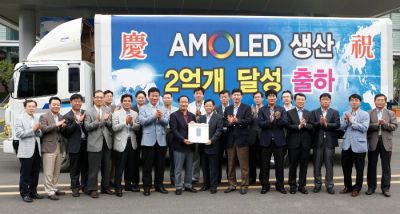WAC lighting announce two new OLED lamps
WAC Lighting announced two new OLED lamps. Both use square OLED lighting panels that feature a color temperature of 4000K, a CRI of 80 and an efficacy of over 32 lm/W. We do not know which company produced the OLEDs.

The Vela OLED chandelier is an aluminum made lamp that has 24 OLED lighting panels. 12 panels illuminate surfaces below and 12 additional panels shine upwards - to render a "soft ambiance that evokes a lighter sense of space and visual comfort". The light output is 2040 lumens at 58 watts (35.2 lm/W). The lamp is suspended by aircraft cables, and the height is adjustable (up to 36 inches).











